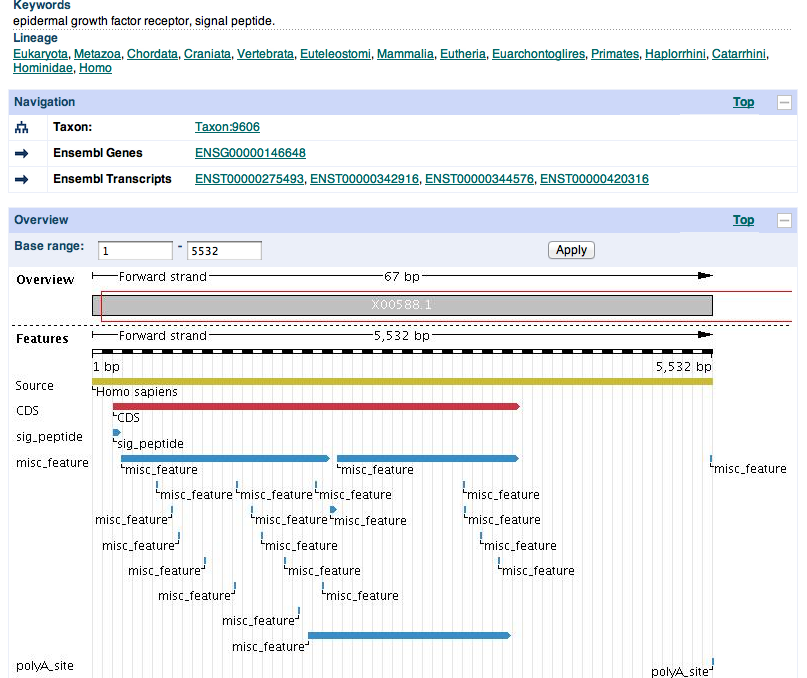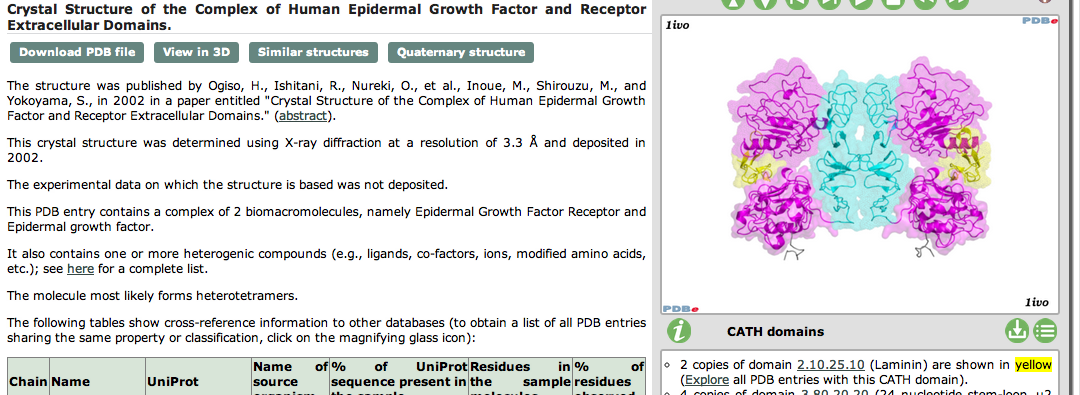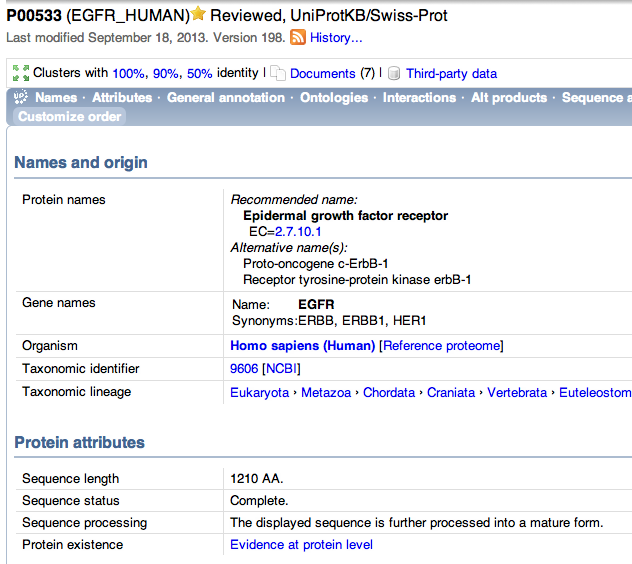Difference between revisions of "Vkuehn Week 5"
From LMU BioDB 2013
(Added Screenshots!!) |
|||
| Line 14: | Line 14: | ||
[[http://www.ebi.ac.uk/ena/data/view/X00588]] | [[http://www.ebi.ac.uk/ena/data/view/X00588]] | ||
* Here is an example of a 3D database result for the epidermal protein: | * Here is an example of a 3D database result for the epidermal protein: | ||
| − | [[ | + | [[File:Second EBI database.png.png]] |
[[http://www.ebi.ac.uk/pdbe-srv/view/entry/1ivo/summary.html]] | [[http://www.ebi.ac.uk/pdbe-srv/view/entry/1ivo/summary.html]] | ||
Revision as of 04:04, 27 September 2013
UniProt Exercise
- Opened and read Bioinformatics For Dummies
- The location where Proteins end up and how they get there are unique
- The folding and domains are very important and help determine the 3D structure
- Searched for the protein P00533 it is an epidermal growth factor receptor
- Here are the results:
- As new information comes out, older accession numbers don't go away, they just get stored as secondary accession numbers, but the most up to date information is only displayed
- The comments section is very useful for gathering information about the protein such as: function, catalytic activity, tissue specificity
- The cross-reference section is very useful for gathering other information in new databases. For example, EMBL-EBI gives a visual overview of the base pairs and other details:
 [[1]]
[[1]]
- Here is an example of a 3D database result for the epidermal protein:
 [[2]]
[[2]]
